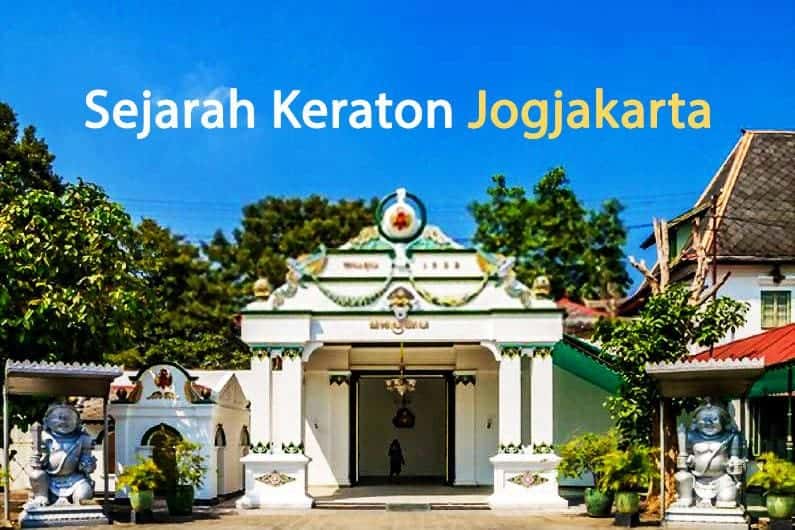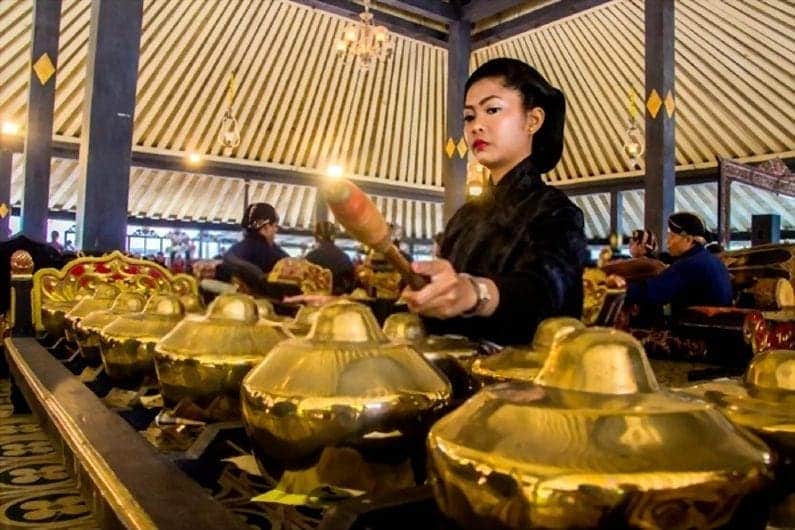History of the Palace Yogyakarta City be an interesting thing to know. Let's discuss about Yogyakarta Palace tourism which has high cultural value.
Instantly we will remember things like the sultanate, courtiers, aristocrats, blue blood and so on when we hear the word Yogyakarta Palace.
Basically, this palace is the residence of the sultanate and the royal family who led the Yogjakarta sultanate.
Now, this old building is immortalized as a historical place that can be visited by everyone. This place is a tourist destination that is always crowded by visitors on holidays.
When vacation to Jogja with childrenYou can make the Jogjakarta Palace as one of your destinations and don't forget to try your supernatural experiment when passing through the banyan palace twins.
If you need a mode of transportation, get it with us too Cheap car rental in Yogyakarta with us.
History of Yogyakarta Palace

Once upon a time in the south central part of Java there was an Islamic kingdom called Mataram. This kingdom was centered in Kota Gede, the Special Region of Yogyakarta and later moved to Kerta, Plered, Kartasura and Surakarta.
The internal conflict and intervention of the Dutch colonialists triggered the breakup of the leadership of the Mataram Kingdom. There was a dispute between the two schools, namely Prabasuyasa or Pakubuwana III with Raden Mas Said and Mangkubumi.
After a long period of conflict, they finally agreed to sign the Giyanti agreement. The Treaty of Giyanti was signed on February 13, 1755.
In this agreement, the Mataram kingdom will be divided into two parts. The Surakarta Hadiningrat Sunanate was led by Pakubuwana III. Meanwhile, the Ngayogyakarta Hadiningrat Sultanate was led by Prince Mangkubumi with the title Sultan Hamengkubuwono I.
The territory of the Ngayogyakarta Sultanate was the city of Yogyakarta and its surroundings, Pajang, Demak, Kulonprogo, Gunung Kidul and its surroundings.
That is the history of the Yogyakarta Palace. We know that there are two sultanates of Java, namely the Yojga Palace and the Surakarta Palace. This is often heard when on a study tour to the Yogyakarta and surrounding areas.
Both have distinctive and different characteristics and cultures including dress procedures, customs, language, gamelan, dances, and so on. All of that is now a special attraction that continues to be preserved.
Palace Building Section
Since the split of the Mataram kingdom, the population of the island of Java was divided into two, namely the people of the Surakarta sultanate and the Yogyakarta sultanate. Both of these sultanate palaces are equally used as tourist destinations for both foreign and domestic tourists.
In addition to knowing the history of the Yogyakarta Palace, it is also important to know what parts are contained in the Yogyakarta Palace tour.
The following are the parts of the Yogyakarta Palace that are open to public visits, namely:
1. Pangurakan Gladhag
This building is the main gate or as a fortress before entering the palace area.
2. Performance ward
This place was used as a place for the Sultan's meeting with the courtiers or courtiers. Now this place has functioned over as the Exhibition Hall for various cultural and tourism activities or events.
In the performance hall, there is a throne or seat of the Sultan. This throne faces straight towards the Jogja monument.
The throne facing the monument is not an ordinary display but has a philosophical message that the Sultan always pays attention to the lives of his people.
Indeed, in ancient times all people's activities were carried out around Tugu Yogja.
3. Siti Hinggil Ler (North Hall)

This room is traditionally used as a place to hold official royal ceremonies.
In addition, this building also functions as a place for storing royal symbols, heirlooms to gamelan devices or traditional musical instruments.
4. Lor's content
This place in ancient times was used as a place to try cases with the death penalty. This court is led directly by Sri Sultan.
Currently, Kamandungan Lor is used as a place for holding traditional events such as garebeg and sekaten.
5. Sri Mananti
Sri Manganti is a room with wards that are used as a place to receive important royal guests.
Now, this place is used for cultural and tourism activities. You can also see some gamelan instruments here.
6. Kedhaton
When studying the history of the Yogyakarta Palace, of course, it cannot be separated from the Kedhaton building. This section is the core of the Yogyakarta palace. The Kedhaton complex is divided into three parts. The first is the Kedhaton Court which is the residence of the Sultan.
The second is the Keputren which is part of the wives and daughters. The third is the Kesatriyan which is part of the son of the Sultan.
7. Internship
Internship is a place used for the selection of prospective employees or courtiers, a place for training, examinations and loyalty ceremonies. The Apprentice Ward which is in the center of the large courtyard.
This section is used for the shadow puppet show as a marker for the completion of all the palace rituals.
8. Siti Hinggil Kidul
This building was used as a place for the Sultan to witness several activities. The activity was the palace soldiers who held a clean rehearsal for the Grebeg ceremony.
In addition, it is also a place to watch human and tiger fights. This building is also a training ground for female soldiers.
Explore too :
Holiday Tips to Yogyakarta Palace Tourist Attractions

Vacations to historical places such as the Yogyakarta Palace, of course, must and must follow the applicable rules. There are do's and don'ts in this place.
The following are holiday tips and Keraton rules that you should know. Among them are:
1. Visit according to operating hours
If you want to enjoy each part of the palace longer, be sure to arrive early or not too late.
Yogya Palace is open for public visits from 09.00 to 14.00.
2. Don't Touch Things Carelessly
The history of the Yogyakarta Palace is evidenced by the presence of many unique relics there. However, there is a prohibition not to touch these objects.
Indeed, sometimes we are curious about an object that is unique and attracts attention. However, try to hold your hand so you don't just touch the royal objects.
3. Don't take photos with your back to Kedhaton and Abdi Dalem
It is common when we visit a tourist place to take some pictures as a memento. However, if you take a photo of the Yogja Palace, there are a few things you need to pay attention to.
You will definitely be reprimanded by the courtiers who stand guard when taking photos with their backs to the kedhaton. This considers not respecting the kedathon as a representative of the sultanate.
Likewise when taking pictures or selfies with courtiers. You should take the best possible pose by not turning your back to them. Taking pictures with your back to the courtiers will be considered rude. That's because they are honorable royal employees and should not be backed down.
4. Don't Wear a Hat
The atmosphere of the Yogyakarta Palace is very beautiful and cool. Therefore, you do not need to bring a hat when going around the palace.
The perception of wearing a hat in the palace area is disrespectful and disrespectful to the people of the palace. However, this does not apply to headscarves and caps which are used as worship equipment.
So, make sure to keep the hat in your bag or just leave it in a safe!
5. Don't Sit Anywhere
Every corner of the palace is a sacred place and is held in high esteem. Therefore, if you feel tired, find a seat or rest that is already available.
Don't just sit down when you see a place that looks comfortable. You will be reprimanded by the courtiers.
Conclusion
Yogyakarta Palace is one of the old buildings with high historical value.
This building will always be maintained and sustainable so as not to be damaged. Knowing the history of the Yogyakarta Palace is also very important.
As a historical witness to past events, this palace is a valuable lesson to remember all these events.
Your vacation will be more valuable and educational when you take the time to visit this place.
If you liked this article, then please subscribe to us YouTube Channel to support us in presenting tourist videos. You can also find us on Instagram or direct to WhatsApp me to consult your travel plans.



